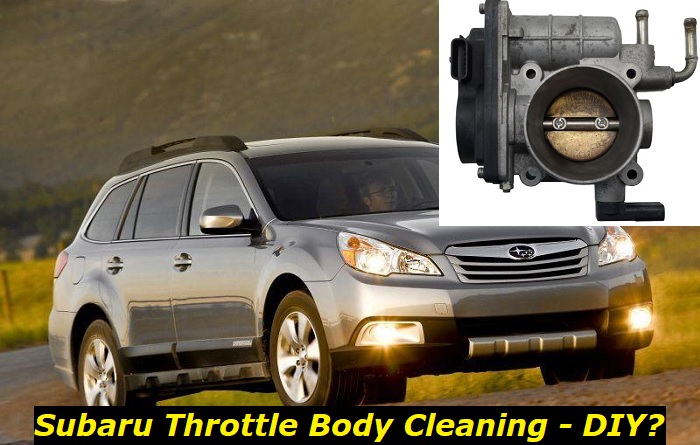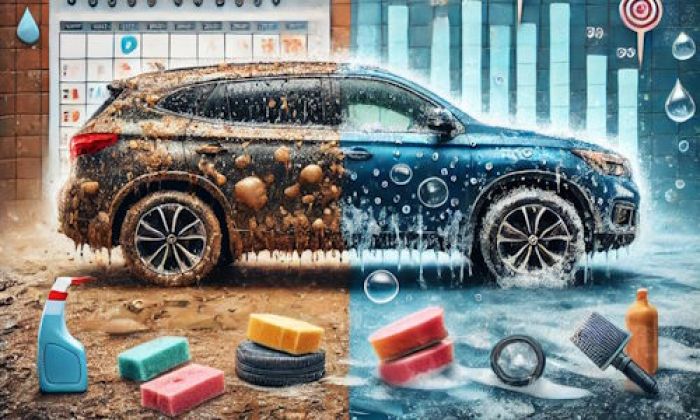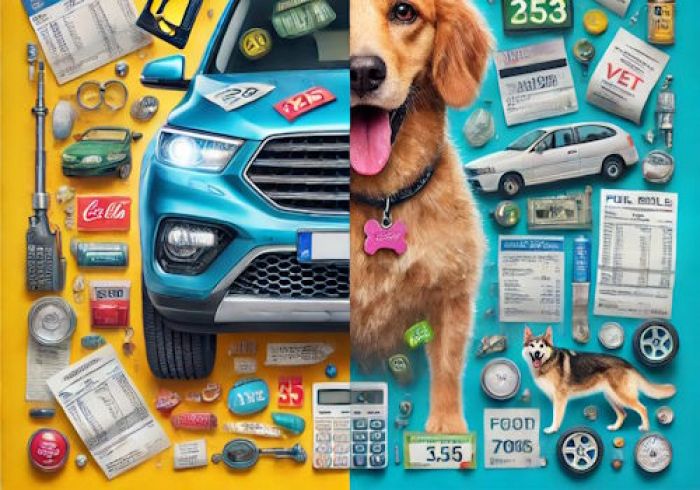The throttle valve is a critical component of the air intake system in modern fuel-injected cars. It regulates air flow into the engine, which helps to consume the gasoline in the cylinders. The right amount of air must circulate through. Your engine may run lean if there is too much or too little air.
Throttle cleaning additives highlights
- Efficiency:good if used correctly
- Availability:limited number of products
- Average price: $45
- Way to use:spray into the throttle
- DIY use:yes, butmaybe complicated
- Experts' advice:mostly positive advice
- Independent testing:a lot of positive testing
- Consequences:injector damage ifused incorrectly, exhaust system damage, valve damage

Signs That Your Subaru Needs a Throttle Body Cleaning
Below is a list of signs telling you that your Subaru's throttle body needs cleaning.
- Sludge Build-Up
The accumulation of dirt and debris inside the component, also known as coking, is one of the main reasons the throttle body needs to be cleaned, as you can imagine. Unfortunately, this results in a rough surface that interrupts air and fuel flow and reduces the performance of your engine. Similar problems arise due to carbon deposits forming an uneven surface within the component.
- Low Fuel Efficiency
Check your fuel efficiency. Fill the tank, then record the distance driven on the fuel gauge. Next, calculate the typical miles per gallon after driving the vehicle until there's no gas in the tank. This value shouldn't differ by more than 10 to 15%. If it does, there is a good chance that your vehicle's performance is being affected by a clogged throttle.
- High or Poor Idle
One of the telltale symptoms that your throttle is not working as well as it should is poor or low idle. You should know there are problems when there's stalling right after stopping, starting with a low idle, or slowing when the throttle gets pushed quickly. Idle speed fluctuates due to turbulence in the system airflow caused by dirt.
- Slow or Uneven Acceleration
The air and fuel entering the engine increase as you depress the throttle. If the throttle is dirty or carbonized, the vehicle will not be able to produce the required combustion power. How does it feel to drive through this? The car may start less quickly than usual or accelerate in unpredictable bursts.
- Problems with Electricity
Electronic wiring is now the nervous system of a modern car, as many of its functions depend on computer connections and controls. For example, suppose the electronic sensor in the throttle body has dirt or grime. In that case, the air-fuel mixture is incorrect. And this can put the vehicle into a secondary reduced-power mode until a service technician services it.
- Airflow Interruptions
The problem could be a throttle stop, which is also a component of the intake system and has improper adjustments. There could also be a build-up of dirt and debris, causing airflow and pressure problems in the throttle body. Uneven airflow will cause pressure problems in the system, affecting performance and acceleration.
- Check Engine Light
The electronic throttle control system is alerted when the throttle body performance is below the required level, causing the check engine light to illuminate the dashboard. You should do manual inspections yourself to see if there is any dirt or carbon around the component, as there are several reasons this light may come on.
- Stalling
The fuel injected into the combustion chamber gets determined by the amount of air the ECU (engine control unit) pulls from the throttle body. If the throttle is dusty or clogged, the engine will stall because not enough air comes for regular operation.
- Unstable Idle
The "idle control" sensor is located on the throttle body to ensure smooth operation of the engine at idle. The function of this sensor is to draw a certain amount of air into the engine to ensure smooth operation at idle. If the throttle is clogged or dirty, this sensor will not work correctly, and the car will not idle smoothly. Further on, you will learn how to clean dirty throttle body sensors.
- Rough Running
Misfires due to a poor fuel-air mixture can be caused by a damaged or dirty throttle body, resulting in rough running. The throttle valve gums up over time and becomes difficult to open after closing, so it needs cleaning. The air filter does an excellent job of trapping large particles that enter from the outside but cannot stop tiny particles or combustion gasses inside the engine.
As the combustion gasses cool and condense as the engine cools, dirt and debris build-up around the throttle valve. This substance makes the valve somewhat sticky and makes it difficult to open due to the tight tolerances of the valve.
How Can You Tell When Your Subaru's Throttle Body Needs Cleaning?
Most drivers do not notice a difference from one day to the next. The valve gets stickier over time, and the vehicle's computer is usually good at ensuring the driver has everything in view. Unfortunately, after a while, probably 10,000 km or 6,000 miles or less, you will notice that the engine hesitates when accelerating from a standstill.
It's almost as if you must push the gas pedal or throttle to a certain degree before the engine realizes it needs to get moving. You observe that the computer instructs the electric motor that controls the valve to start moving after it detects the pedal's position. However, because the valve is sticky, the engine does not have enough power to open the valve until you push the pedal past a certain point. The deeper you must press the pedal before the valve moves, the stickier the valve becomes.
What You Need to Clean the Throttle Body of Your Subaru
Now let us move on to the tools needed to clean the throttle body and valve. The procedure is simple. You need to know how to use a screwdriver, a paper towel to clean a surface, and a spray can. And here are the tools you need:
A few pieces of a paper towel or a clean, thick rag.
- Throttle body cleaner, which is available at most auto supply stores
- A Phillips screwdriver
- Screwdriver
The Steps to Clean Your Subaru's Throttle Body
Now, let us take a look at the steps you need to take when cleaning your Subaru's throttle body:
- First, remove the negative battery terminal (optional, but a good idea).
- In the XV engine wiring diagram, use a Phillips screwdriver to loosen the two terminals labeled "B" and "C"
- Take out the clamp marked "A"
- Carefully detach the throttle body and air cleaner body from the entire air intake assembly/trunk.
- The PCV hose is attached to the assembly; you can unhook it with pliers or rotate the intake 180 degrees.
- After reading the throttle body cleaning instructions, the spray can insert the straw into the nozzle. Again, heed the warning about the dangers of the throttle body cleaner to people, plastics, and paint.
- Now comes the most challenging part of the process: the opening of the throttle body faces the back of the vehicle, making it difficult to see what you are doing. Put your fingers inside the throttle body (there is only the valve there, so do not worry). If you put pressure on the top of the butterfly valve with your finger, you can open it. Usually, you can hear the electric motor and transmission turning when the flap opens.
- Gently spray the throttle cleaner around the edges of the throttle opening and valve. You will not need much.
- Use paper towels to clean the area. The towel contains a lot of black material, as you will see.
- Do steps 7, 8, and 9 again and thoroughly wipe the paper towel down.
- Reinstall the air intake, connect the battery, and reconnect the PCV hose (if disconnected).
Now you know what equipment you need, how to clean the throttle body without removing it and determine if it needs cleaning. Remember that this is preventive maintenance to keep your vehicle in top shape.
You should consult an expert if you are still having trouble cleaning your Subaru's throttle body. If you are uncomfortable with the procedure, you should stop as you risk damaging certain parts of your Subaru. Also, remember to put on safety glasses to protect your eyes from harmful materials.
About the authors
The CarAraC research team is composed of seasoned auto mechanics and automotive industry professionals, including individuals with advanced degrees and certifications in their field. Our team members boast prestigious credentials, reflecting their extensive knowledge and skills. These qualifications include: IMI: Institute of the Motor Industry, ASE-Certified Master Automobile Technicians; Coventry University, Graduate of MA in Automotive Journalism; Politecnico di Torino, Italy, MS Automotive Engineering; Ss. Cyril and Methodius University in Skopje, Mechanical University in Skopje; TOC Automotive College; DHA Suffa University, Department of Mechanical Engineering






Add comment